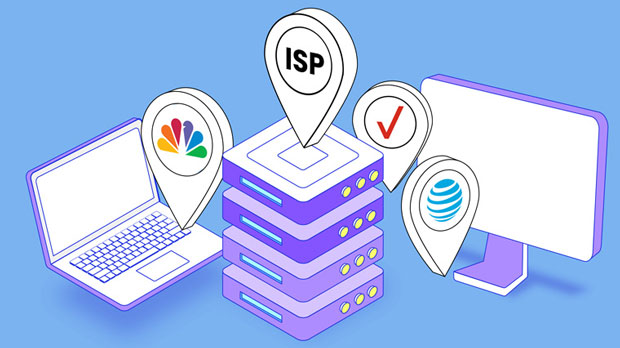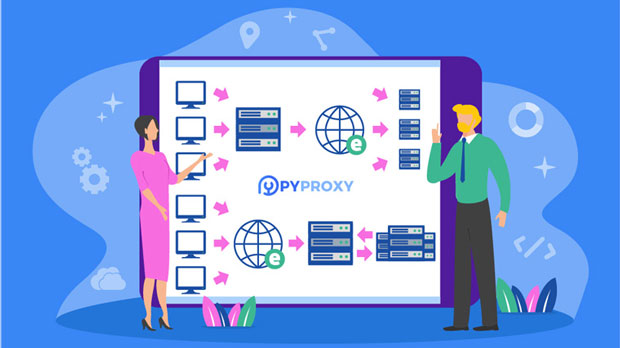Role of rotating IP proxies in social media management?
In today’s digital era, social media management has become a pivotal aspect of brand development and marketing strategy. To effectively engage with target audiences, manage accounts, and monitor performance across various platforms, businesses and social media managers rely on innovative tools. One such tool that has gained significant importance is rotating ip proxies. Rotating IP proxies are essential for protecting privacy, managing multiple accounts, and bypassing geo-restrictions. This article will delve into the various functions and benefits of rotating IP proxies in the realm of social media management, providing insights into how they enhance performance, ensure security, and streamline operations for businesses and individuals alike. Understanding Rotating IP ProxiesTo better comprehend the impact of rotating IP proxies in social media management, it’s crucial first to define what they are. A rotating ip proxy is a system that assigns a different IP address every time a request is made. Instead of using a single, static IP address, which can be easily detected and blocked by websites or platforms, rotating proxies automatically switch to new addresses. This system makes it far more difficult for social media platforms to track, restrict, or ban users based on IP addresses. By continuously changing IPs, users can appear as if they are accessing the platform from different locations, providing several operational advantages.Why Rotating IP Proxies Are Important for Social Media ManagementIn the context of social media management, rotating IP proxies offer a range of valuable benefits. The most significant advantages include the ability to perform actions at scale, manage multiple accounts simultaneously, and protect user identity. Below are key reasons why rotating IP proxies are critical for efficient social media management:1. Safeguarding Multiple AccountsSocial media platforms often impose strict regulations regarding the number of accounts that can be created and managed from a single IP address. Managing multiple accounts without running into issues such as bans or account suspensions can be difficult. Rotating IP proxies allow users to simulate activity from different locations, making it possible to run and manage several accounts without triggering automated security measures designed to detect suspicious behavior. This ensures that accounts remain safe and secure while also preventing any interruptions to social media operations.2. Bypassing Geo-RestrictionsMany social media platforms restrict or alter access to content based on geographical location. Some users might want to access a specific region's content, trends, or audience, but geo-blocks prevent this. With rotating IP proxies, users can bypass these restrictions by changing their virtual location. Whether targeting a particular region or testing how content is presented to different audiences worldwide, rotating proxies make it possible to access social media platforms as if you were in a different country, enabling businesses to expand their reach across borders seamlessly.3. Avoiding IP Bans and Rate LimitsWhen managing multiple accounts or executing a high volume of actions (such as posting, liking, or following/unfollowing), it is easy to hit rate limits imposed by social media platforms. Additionally, excessive activity from the same IP address can trigger automated security systems, leading to IP bans or account suspensions. By rotating IPs, users can distribute their actions across different addresses, minimizing the risk of triggering rate limits or bans. This is particularly useful for tasks such as web scraping or performing large-scale social media engagement activities.4. Enhancing Privacy and SecurityIn social media management, maintaining privacy and security is paramount. Using a single, static IP address exposes the user to potential tracking and cyber threats. Rotating IP proxies add an extra layer of anonymity by masking the user’s true location and identity. This is especially important when conducting sensitive activities such as competitive research, managing online reputation, or analyzing user behavior across social media platforms. With rotating proxies, users can keep their operations discreet and shield their digital footprint from prying eyes.5. Facilitating Web Scraping and Data CollectionWeb scraping is a vital part of social media management, as it allows businesses to gather insights about competitors, track brand mentions, analyze market trends, and conduct research on customer preferences. However, web scraping can trigger anti-bot defenses on social media platforms, leading to IP blocking or limiting access. Rotating IP proxies help bypass these blocks by continuously changing the IP address, allowing for uninterrupted data collection at scale. This provides businesses with valuable insights that can inform their social media strategies.6. Improving Marketing and Advertising CampaignsEffective social media marketing and advertising campaigns require precise targeting and testing. By using rotating IP proxies, businesses can access different regional markets, conduct A/B testing, and evaluate ad performance across multiple geographies. The ability to rotate IPs ensures that testing is done without hitting limitations imposed by the platform’s anti-fraud algorithms. Whether testing ad creatives, targeting specific demographics, or analyzing campaign performance, rotating proxies ensure accurate results and smooth operations.7. Scaling Social Media OperationsAs businesses grow and expand their presence across multiple social media platforms, scaling operations becomes a significant challenge. Rotating IP proxies provide a scalable solution by allowing users to automate and streamline tasks such as content posting, engagement, and account management. With the ability to handle large volumes of simultaneous actions without the risk of detection, rotating proxies are an indispensable tool for companies aiming to scale their social media management efforts efficiently.Challenges and Considerations in Using Rotating IP ProxiesWhile rotating IP proxies offer numerous benefits, there are also challenges and considerations to keep in mind when integrating them into social media management strategies. First, it is important to use high-quality rotating proxies that offer reliability and speed, as poor proxies can lead to delays, slow load times, or even poor user experience. Additionally, rotating IP proxies must be used responsibly to avoid violating platform terms of service. Overuse or misuse of proxies can lead to account bans or blacklisting. Therefore, businesses must ensure that their use of rotating IP proxies aligns with ethical practices and platform guidelines.ConclusionIn summary, rotating IP proxies are an invaluable tool in social media management. They help businesses and individuals navigate the complexities of managing multiple accounts, bypass geo-restrictions, avoid rate limits, and enhance privacy. Whether conducting research, executing marketing campaigns, or scaling operations, rotating proxies empower social media managers to operate efficiently while safeguarding their online presence. As the digital landscape continues to evolve, leveraging rotating IP proxies will remain a strategic advantage for social media management, providing businesses with the flexibility and security they need to succeed in the competitive world of social media.
2025-02-07
























































